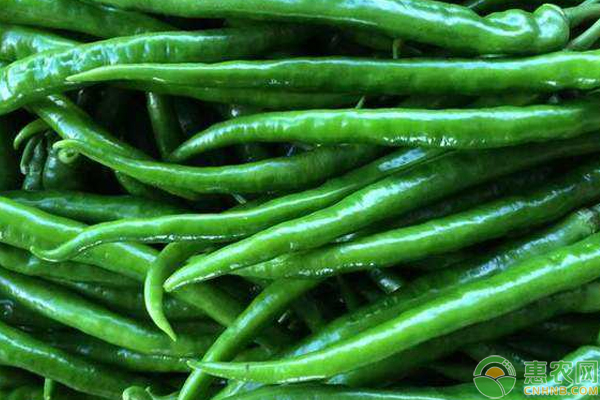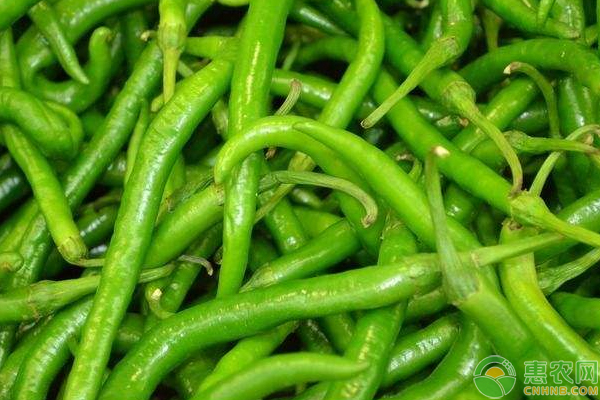How to cultivate pepper? Cultivation Techniques of 37-74 Pepperhouse in Qinggang County
As we all know, pepper is a vegetable that we often eat. It has high nutrition, its taste is spicy, it can regulate the body's taste and increase appetite. Pepper is a kind of pepper variety, which is popular in daily life. The following is about the 37-74 pepper potting cultivation technology, and the growers are hurrying around.

1 shed selection
37-74 The growth of pepper is strong. In order to seek higher yield in cultivation, it is necessary to choose a high-barn shed with no organic crops and no organic crops for 2 to 3 years.
2 nursery
The germination period of the early spring sheds in Qinggang County 37-74 is generally around April 22, and the required seedling age is generally around 90 days. Therefore, the nursery time is determined in mid-January. In the greenhouse, a seedbed with a height of 30 cm and a width of 120 cm was built. The bed surface was covered with 8-10 cm thick nutrient soil, and the upper part was placed with a 50 cm high arch shed.
2.1 Strong seedling standards
37-74 When the pepper is planted, the plant height is about 20 cm, the stem is thicker than 0.4 cm, the leaves are dark green and the leaves are intact, no pests and diseases, the roots are developed, the roots are more, and more than 70% of the peppers are buds.
2.2 Preparation of nutrient soil
The high-quality field soil that has not been planted with Solanaceae crops and has not been applied with long-acting herbicides for 2 to 3 years is mixed with fully decomposed farmyard manure and finely ground slag according to a ratio of 6:3:1 by volume. After sieving Incorporating calcium superphosphate 1 500 g/m 3 , 60% fungus double-killing soil treatment agent 20 g/m 3 , mixing evenly, and then laying it on the seedbed and loading 10 cm × 10 cm of nutrient mortar required for seedlings The seedbed is poured through the bottom water and enters the state to be broadcasted.

2.3 Seed treatment
Put the seeds into warm water at 50 °C, stir while planting, stop stirring when the water temperature drops to 30 °C, then dip for 4 to 5 hours, then remove them, wrap them in gauze and place them in a 25 °C incubator. % Seeds can be sown when exposed.
2.4 Sowing
The germination seeds are spread evenly on the nursery bed, the seeding amount of the seedbed is 15-20 g/m 2 , and the fine soil of 0.5-1.0 cm thick is covered after the sowing, and then the mulch is covered with the mulch, and the heating room is used to assist the shed. , to maintain the temperature in the small arch shed at 28 ~ 30, 20 ~ 22 ° C, respectively, to promote emergence.
2.5 Seedling management
The first is temperature management. In order to prevent the length of the seedlings, the temperature management should be carried out in time to keep the temperature of day and night in the small arch shed at 25-27, 17-18 °C, and the temperature of day and night before seedlings is kept at 22-25, 15-17 °C. The second is humidity management. It was found that more than 65% of the seedlings were unearthed, and the mulch film should be removed in time. The south side of the arch shed was opened for 1 to 2 hours at sunny noon for ventilation and dehumidification. If the humidity of the seedbed is too large, it can be 0.3-0.5 cm thick on the surface of the seedbed. Screen the fine soil for dehumidification. After seedlings, the temperature is increased in time to promote slow seedlings. The temperature of day and night is maintained at 28-30, 20-22 °C respectively. After the seedlings are warmed, the temperature can be properly maintained at 22-25, 15-18 °C; 7-10 before planting. d Increase the amount of ventilation, and gradually remove the arch shed cover to adapt the seedlings to the temperature inside the shed.

10 to 15 days before planting, spray once with 0.2% urea solution + 0.3% potassium dihydrogen phosphate solution to increase plant stress resistance; 2 to 3 days before planting, 72.2% Plex water solution 1 000 times solution, Or 2.5% spray at 2 000 times to control the spread of germs and ensure that sterile seedlings are placed in the shed.
3 Site preparation
Combine with the soil preparation, apply fully decomposed cow dung 225 m 3 /hm 2 , carry out the first rotation, depth 20~25 cm, swell for 15-20 days after the rotation, open the venting, then spread the chamber 51 % ternary compound fertilizer + medium and trace element fertilizer 120 ~ 150 kg / hm 2 , for the second rotation, after the ground preparation, 110 cm large ridge, height 15 cm, and then drip irrigation facilities, film temperature increase, ready for planting.
Planting dense planting is an important factor in achieving high yield. 37-74 pepper is cultivated in a single row of 110cm large ridge, with a plant spacing of 23cm and a seedling volume of 39,000 plants/hm 2 . 5 to 7 days before planting, the drip irrigation equipment will be opened, and the soil moisture on the ridge will be as deep as 15-20 cm. Then, according to the size of the nutrient crucible, the hole will be opened, and the pepper seedlings will be removed into the hole, one per hole, and finally The planting water is poured, and after the water is completely infiltrated, the wells are fixed with fine wet soil.
4 Field management
4.1 Temperature Management
After planting, the temperature increase promotes slow seedling, the temperature is maintained at 30~32 °C during the day, and 18~20 °C at night; the seedlings are cooled after the seedlings are lowered, and the temperature of day and night is kept at 25~27, 13~15 °C respectively; The day and night temperature is maintained at 30 to 33 and 13 to 15 °C, respectively.
4.2 Fertilizer management
3 to 5 days after planting, 1 time of watering, the humidity is maintained between 70% and 80%; after the seedlings, the water supply should be controlled, the humidity should be kept between 50% and 60%; before the fruit grows to 15 cm, according to The soil moisture is watered, but not fertilized; after the fruit grows to 15-20 cm, the water-soluble fertilizer is <20-20-20>60-75 kg/hm 2 combined with watering, and then water is poured twice. 1 time fat.
4.3 Early disease prevention
3 to 7 days after slow seedling, spray with 68% gold leiduol kiln manganese zinc water dispersing granules 450 g/hm 2 and water 225 kg/hm 2 , spray once every 10-15 days to prevent early blight happened.
4.4 Plant adjustment
4.4.1 Traction branches. When the plant grows to 30-40 cm, the branches are towed. For the double-rod pruning, two traction ropes are required. First, the two ends of the two traction ropes are respectively attached to the iron wire in the shed according to the distance of 15-20 cm. The other ends of the two traction ropes are respectively attached to the hanging vines, and then the hanging vine clips are respectively placed on the top of the door. On the two branches selected, in the future, as the plant grows, two branches should be entangled at any time to prevent the branches from breaking.
4.4.2 Trim the branches. Before the harvest, the pepper is generally not pruned. After harvesting, the door is selected from the top of the upper part to select two strong lateral branches for the main branch, and the other lateral branches of the upper part are left with 2 to 3 leaves for topping, and the lower branches and leaves of the door are removed. .
5 harvesting
40 to 50 days after planting, the pepper can be harvested when it is about 25 cm long. The pepper should be picked early, so as not to affect the growth of the upper branches and the flowering and fruit setting. After harvesting every 5 to 7 days, the fruits should be taken away from the sun after harvesting.
Pepper is a very popular dish and is widely used in everyday life and is an ingredient in many dishes. It has good planting benefits and it is worthwhile for growers to grow alfalfa. The above is the cultivation technology of pepper sheds for everyone to learn from.
Light Amber Halves Walnut Kernels
only divided by color, the quality , the size , the taste are as well as the light halves
different types of the walnut has the different color of the skin of the Walnuts kernels , the little darker color of the light amber color halves is only caused by the different type of the walnuts naturally.
Light Amber Halves Walnut Kernels,Standard Walnut Kernels Light Amber Halves,Walnuts Kernels Light Amber Halves,Light Amber Walnut Kernels Halves
Weishan Yuanxing Walnuts Co.,Ltd. , https://www.walnutsxxy.com